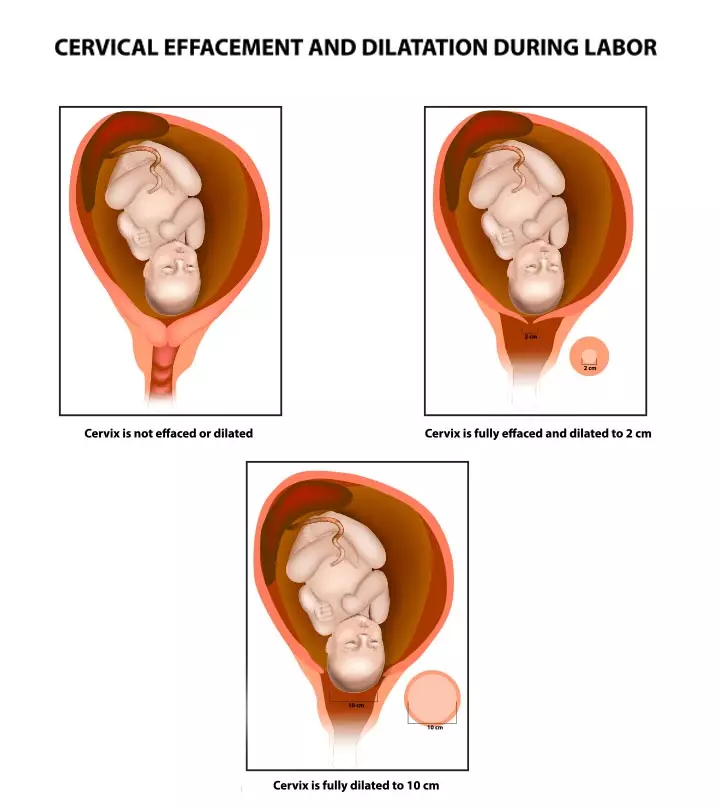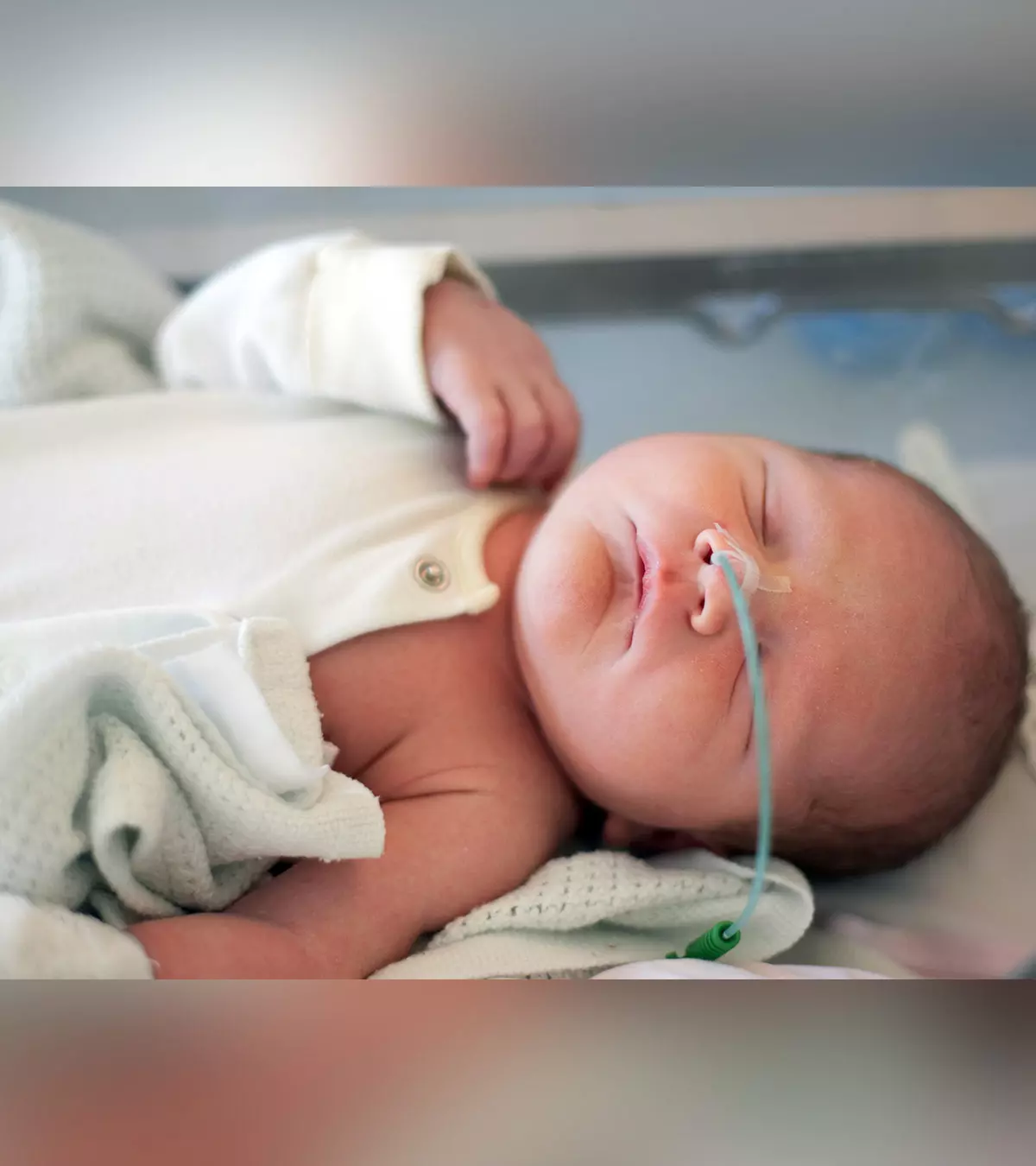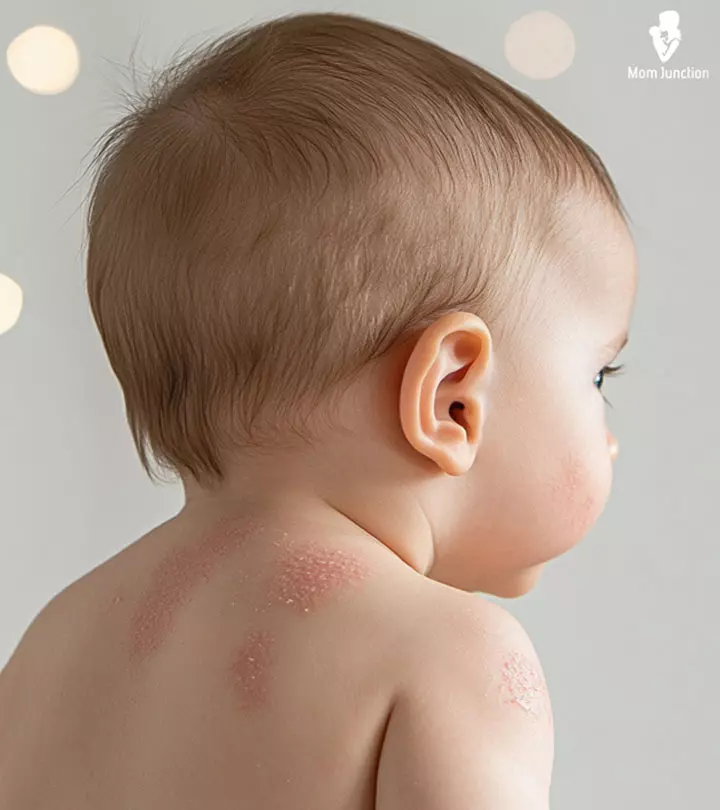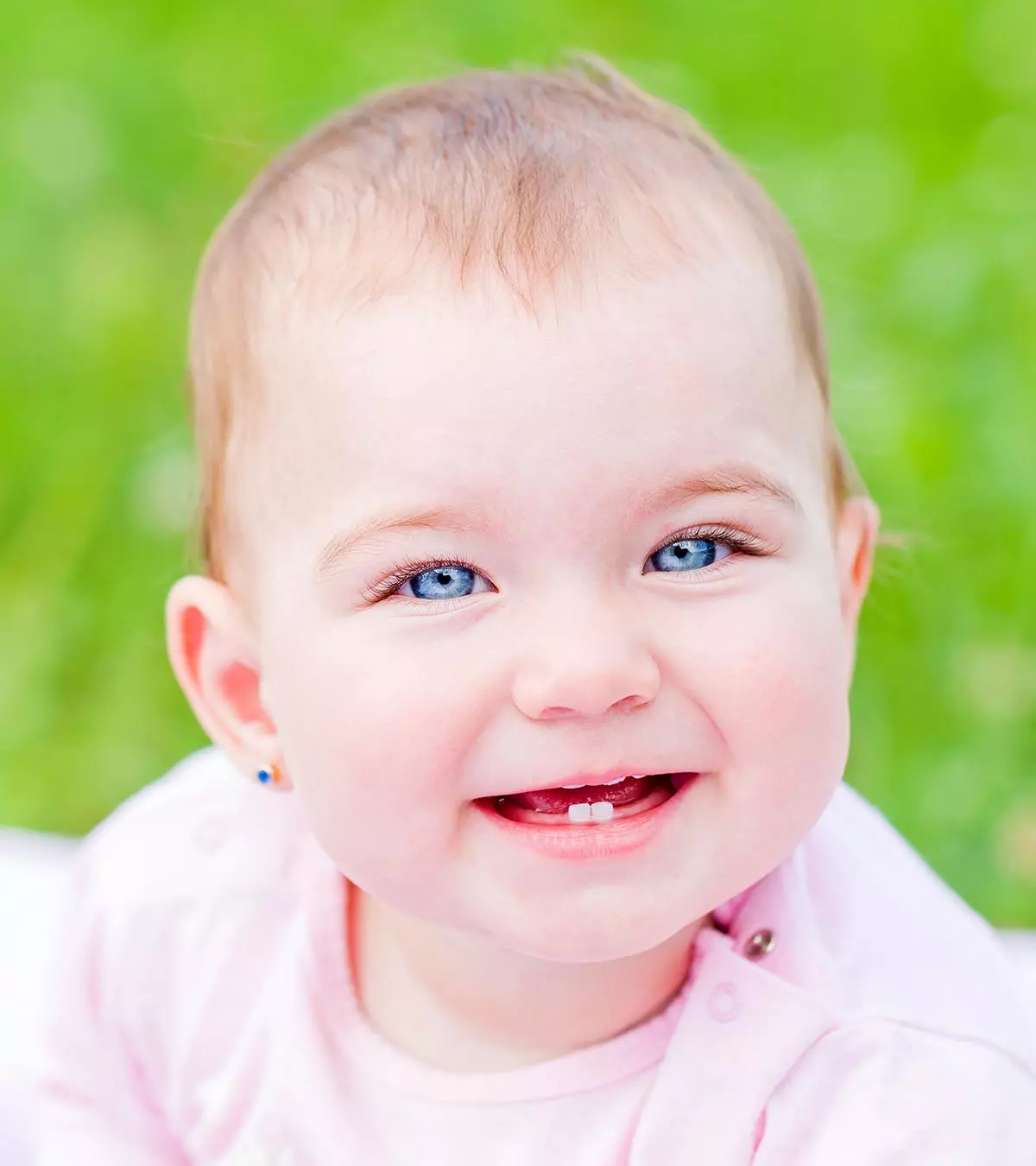
Image: Shutterstock
Seizures in babies are instantaneous, uncontrollable electrical brain abnormalities that cause alterations in their actions, movements, and consciousness.

If you notice two or more seizures without a known cause and within a gap of 24 hours, it could be a sign of an epileptic episode.
A seizure is mostly triggered by a head injury or a brain-related disorder and is common in infants and children. It may be difficult to identify a definite cause for seizures; however, it is best to contact a specialist to seek immediate medical care and avoid future risks of seizures.
Read on to discover the types, signs, causes, diagnosis, treatment options, and outlook of seizures in babies.
Key Pointers
- Babies can have focal seizures on particular brain areas or generalized seizures involving both sides of the brain.
- Brain damages due to various diseases and environmental factors can cause seizures in babies, and the symptoms may vary depending on the affected brain area.
- Electroencephalogram and imaging help diagnose seizures, and antiseizure medications are prescribed.
Types Of Seizures In Infants
Infant seizures can be of various types depending on the affected brain area and the clinical symptoms. Many babies, especially newborns, can have subtle seizures with no obvious signs. Other types of seizures in infants may include the following (1) (2).
1. Focal seizures
Focal seizures (partial seizures) cause abnormal brain electrical activity in specific areas of the brain.
Focal seizures, also known as partial seizures, are divided into the following subtypes.
- Simple focal seizures involve only specific parts of the brain, and the symptoms are characteristic of them. The infant may not lose consciousness. For example, a focal seizure of the occipital lobe triggers isolated muscle spasms in the arms or legs. Precursor signs called auraiSensory disturbances, such as flashes of light and tingling sensation, that an individual experiences before a seizure. are seen in infants before the onset of simple focal seizures. Fear, anxiety, and changes in hearing and vision are common precursor signs.

Image: Shutterstock
- Complex focal (partial) seizures occur in one lobe of the brain and cause loss of consciousness in infants. This is also known as complex onset impaired awareness seizures. Infants may become unaware of their surroundings and often show unusual behaviors such as chewing and smacking.
2. Generalized seizures
Generalized seizures involve both sides of the brain and are often associated with a brief loss of consciousness.
The following subtypes of generalized seizures are seen in infants.
- Absence seizures or petit mal seizures cause a sudden loss of consciousness, and the eyes remain open with an abnormal gaze. Usually, this may last less than 20 to 30 seconds and can occur several times a day.
- Atonic seizures cause sudden loss of muscle tone, making the baby like a rag doll or limp while walking or causing them to fall from a standing position. Head and arms may drop down in most babies, along with unresponsiveness.
- Tonic seizures cause sudden stiffness in some parts of the body, and eyes and head may turn to one side.

Image: Shutterstock
- Clonic seizures cause rhythmic jerking or twitching of an arm or leg, and this may switch from one side to another.
- Myoclonic seizures may cause brief jerking or spasms of one muscle or muscle group in the body.
- General tonic-clonic seizures or grand mal seizures are common types of seizures in babies. This may cause a series of events, including contraction of the body and straightening followed by tremors or shaking and then to a clonic phase where muscles gradually return to normal.
Other types of seizures common in infants may include:
- Infantile spasms or West syndrome is a rare type of seizure with sudden spasms (stiffening) of the body, neck, or legs. This is common when the baby wakes up or falls asleep and often occurs several times a day.
- Febrile seizures are convulsions triggered by high fever in babies and not triggered by neurological problems. According to the National Institute of Neurological Disorders and Stroke (NINDS), around one in 25 children will encounter a febrile seizure at some point during their childhood. Additionally, approximately 40 percent of children who experience one febrile seizure might suffer from a recurrence. A mother, Kolina Cicero, shares her insight when her baby had febrile seizures. She observes, “Frankie was groggy when I pulled her out of the crib and lay her down on our bed. We took her temperature and saw that it was 103.3°. As we huddled around her deciding what to do, she twitched. And then she didn’t stop. I held my 10-month-old in my arms as her little body shook, her head turned to the side and eyes looking away from me… About a minute after it began, the seizure subsided, and something I later learned is called postictal kicked in. It’s the state of consciousness that occurs after a seizure, and it is terrifying.
In the ambulance ride to Children’s Hospital, I learned that Frankie had what is called a febrile seizure, a convulsion caused by a dramatic spike in body temperature. By the end of our three-hour stint at the ER, which included a dose of ibuprofen, a catheter to pull a sample for a urinalysis, and an IV to retrieve a blood sample, Frankie’s temperature normalized. They told us her fever was caused by a virus and that we just needed to ride it out. When we got home, she crawled around, laughed, and pulled the cat’s tail (i).”
Simple focal seizures can progress to generalized seizures in some babies. It indicates that abnormal electrical activity can begin in one area of the brain and spread to other parts.
Causes Of Seizures In Babies
Various medical conditions and injuries can disrupt electrical activity in the brain and often result in seizures. Brain injury or damage such as hypoxic-ischemic encephalopathy (HIE) is the most common cause of seizures in newborn infants. Common causes of seizures in infants may include (3):
- Stroke
- Brain tumors
- Brain hemorrhage or bleeding
- Infections such as encephalitisiA severe inflammatory brain condition resulting from an infection or autoimmune response. and meningitisiInflammation of the protective layers and fluid surrounding the brain and spinal cord.
- Certain birth defects and genetic disorders
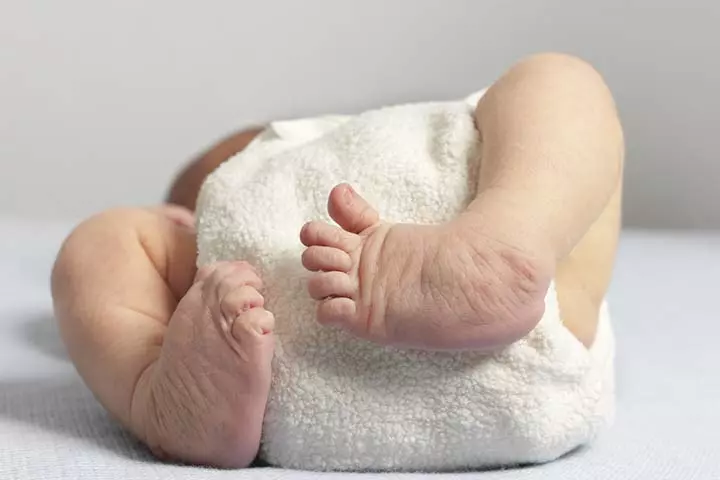
Image: Shutterstock
- Metabolic disorders including hypoglycemiaiA condition characterized by a fall in blood sugar levels to lower than the normal range.
- Electrolyte disorders like HypocalcemiaiA condition marked by lower than normal levels of calcium in the blood, causing muscle spasms, cramps, and weakness. and hyponatremiaiA condition marked by lower-than-normal sodium levels in the blood leading to brain-related symptoms such as confusion and seizures. are one of the most common causes of seizures in infants, which are treatable and have a good prognosis.
Newborns with seizures may have a history of oxygen deprivation or head injuries during delivery. Forceps or vacuum-assisted deliveries may increase the risk of head trauma and seizures in newborn babies.
 Point to consider
Point to considerSigns And Symptoms Of Seizures In Babies
Infant seizures can be challenging to recognize since they are short and subtle.
In addition, symptoms of a seizure may vary according to the type of seizure. Most babies may have seizures when they are awake. However, some babies can have sleep seizures at night or during a daytime nap. Any type of seizure can occur during sleep and often impacts the quality of sleep in babies.
Subtle seizures that are convulsions without tonic or clonic movements are common in full-term babies. Symptoms of subtle seizures in infants may include (3):
- Sudden eye movements such as eyes rolling up, wide opening of eyes, and staring
- Eyelid blinking or fluttering
- Sucking, chewing, or smacking movements
- Protrusion of the tongue
- Apnea (long pause of breathing)
- Pedaling or unusual bicycling movements of the legs
- Struggling or thrashing movements
Symptoms of tonic seizures in infants may include:
- Muscle stiffness or tightening
- Turns head or eyes to one side
- Stretch or bend one or both arms or legs
Symptoms of clonic seizures may include:
- Rhythmic jerking movements of various muscles involving the tongue, face, legs, and arms
Symptoms of myoclonic seizures may include:
- Quick and single jerking movements of the whole body or one arm or leg
Identifying the type of seizure is essential for timely medical intervention and effective management. Some symptoms of infant seizure can be similar to normal behaviors and movements. Therefore, you may seek medical care to diagnose and treat seizures in infants.
 Quick fact
Quick factDiagnosis Of Seizures

Image: IStock
Health history and symptom details may help obtain a clinical diagnosis of seizures in babies. Documenting and reporting the baby’s symptoms and seizure occurrences to the doctor can assist in diagnosis. However, an electroencephalogram (EEG) is ordered to confirm the diagnosis. EEG testing records the electrical activity of the brain through electrodes placed on the scalp. Usually, EEG abnormalities are seen in babies with seizure disorders but sometimes EEG may be normal, especially in inter-ictal phases.
Brain imaging studies such as computed tomography (CT) scans and magnetic resonance imaging (MRI) scans are often done to visualize brain tissue abnormalities. In addition, blood tests and cerebrospinal fluid (CSF) analysis are also often ordered to identify underlying causes.
Treatment For Seizures In Infants
Various antiepileptic or antiseizure medications are used to treat seizures in infants. The pediatrician may opt for medicines according to the baby’s age, seizure type, underlying cause, and other medical conditions. Antiseizure or antiepileptic medications do not cure seizures; they help to control the condition. Infants may often require a longer course of medication to control seizure disorders.
Pediatric neurologists or epilepsy specialists may give prescriptions for anticonvulsant medications. Some of the medications prescribed commonly are (4).
- Carbamazepine
- Clonazepam
- Phenobarbital
- Phenytoin
- Sodium valproate
- Vigabatrin
- Stiripentol (Used only for a specific disorder, Dravet syndrome in babies. Not a commonly prescribed medication.)
Appropriate regular doses of antiseizure medications can control seizures in most babies. However, certain convulsions may not respond to treatment with antiseizure medications. For example, pyridoxine-dependent seizures (PDS) require daily vitamin B6 (pyridoxine) supplements for months or years to prevent seizures since it is caused by the inability of the infant’s body to metabolize vitamin B6.
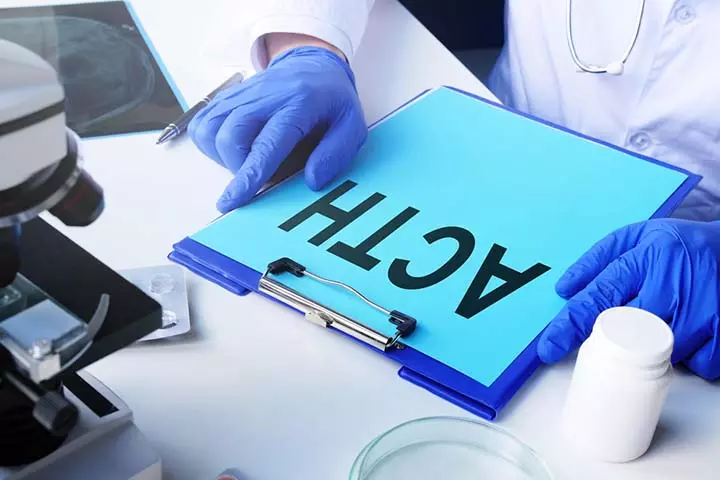
Image: Shutterstock
The American Academy of Neurology and the Child Neurology Society recommend using adrenocorticotropic hormoneiHormone naturally secreted by the pituitary gland, sometimes also employed for therapeutic purposes. (ACTH) for infantile spasms. Antiseizure medication such as vigabatrin is tried if ACTH does not work. The ketogenic diet (high-fat, low-carb diet) is also recommended to control refractory seizures and infantile spasms.
 Point to consider
Point to considerOutlook Of Seizures In Babies
Babies who have convulsions before one year of age may or may not continue to have seizures at a later age. The prognosis may vary depending on the onset and type of seizures. Premature infants may have a poorer prognosis than term infants. Seizure-related disabilities and mortalities are high among preemies.
Babies with seizures can also get disability living allowance (DLA) in some countries since they require long-term care. This can be claimed from birth or three months if they require more medical care and supervision. You may inform the pediatrician if your baby has seizures since early diagnosis and treatment can improve outcomes.
Frequently Asked Questions
1. Are seizures in babies normal?
The prevalence of neonatal seizures is high in the first 1–2 days to the first week after birth. The incidence is approximately 3 per 1000 live births in full-term infants and as high as 57–132 per 1000 live births in pre-term infants (5).
2. Do baby seizures go away?
Yes, but it is dependent on the type of seizure and its onset. Most babies with normal EEGs, MRIs, normal development, no other neurological disorders, and convulsions easily controlled with medication can outgrow seizures (6). However, less than 15% of these babies may have recurrent seizures (5).
3. Can teething cause seizures?
Teething was previously thought to be a major cause of infantile seizures, but it lacks evidence. Rather, due to the overlapping symptoms of teething and seizures in babies, it has been assumed that teething causes seizure (7).
Seizures in babies occur due to abnormal brain activity resulting from various pathologies, and they require immediate medical attention. The doctor may perform an EEG, MRI, or CT scan or do other tests such as blood tests and a CSFiA diagnostic method used to evaluate the cerebrospinal fluid for the presence of any diseases concerning the brain and spinal cord. examination to find the exact cause of seizures in babies. Once diagnosed, the treatment duration for epilepsy is long, but proper treatment can help lead a normal life. Though several home remedies are tried anecdotally, they are not medically proven and may worsen the situation.
Infographic: Reasons For Seizures In Babies
When a seizure occurs, several neurons fire at a single time. Many neonatal seizures occur during the first 28 days of the baby’s life. There can be many causes for it. Read this infographic to find out the top causes of seizures in a baby.
Some thing wrong with infographic shortcode. please verify shortcode syntaxDo you wish to support your child and prevent injuries during a seizure? Here is an informative first-aid video to help you calmly assist your child and comfort them until the seizure stops.
Personal Experience: Source
MomJunction articles include first-hand experiences to provide you with better insights through real-life narratives. Here are the sources of personal accounts referenced in this article.
i. My baby had a seizure;https://kolinacicero.medium.com/my-baby-had-a-seizure-d94771587a9c
References
1. Epilepsy in babies; Epilepsy Action
2. Types of Epilepsy and Seizure Disorders in Children; Hassenfeld Children’s Hospital at NYU Langone
3. Neonatal Seizures; UCSF Benioff Children’s Hospitals
4. Epilepsy in young children: What is the treatment?; University of Iowa Stead Family Children’s Hospital
5. Panayiotopoulos CP; The Epilepsies: Seizures, Syndromes and Management; NCBI
6. Living with Seizures; Nationwide Children’s Hospital
7. Francesco Brigo et al.; ‘Infantile convulsions’ in the early nineteenth century. Abnormal brain blood flow and leeches, teething and gums’ scarification and food and purgatives: the historical contribution of John Clarke (1760-1815); NCBI
8. Seizures and epilepsy in children; John Hopkins Medicine
Community Experiences
Join the conversation and become a part of our nurturing community! Share your stories, experiences, and insights to connect with fellow parents.
Read full bio of Dr. Garima Garg Seth
Read full bio of Dr Bisny T. Joseph
Read full bio of Rohit Garoo
Read full bio of Vidya Tadapatri









